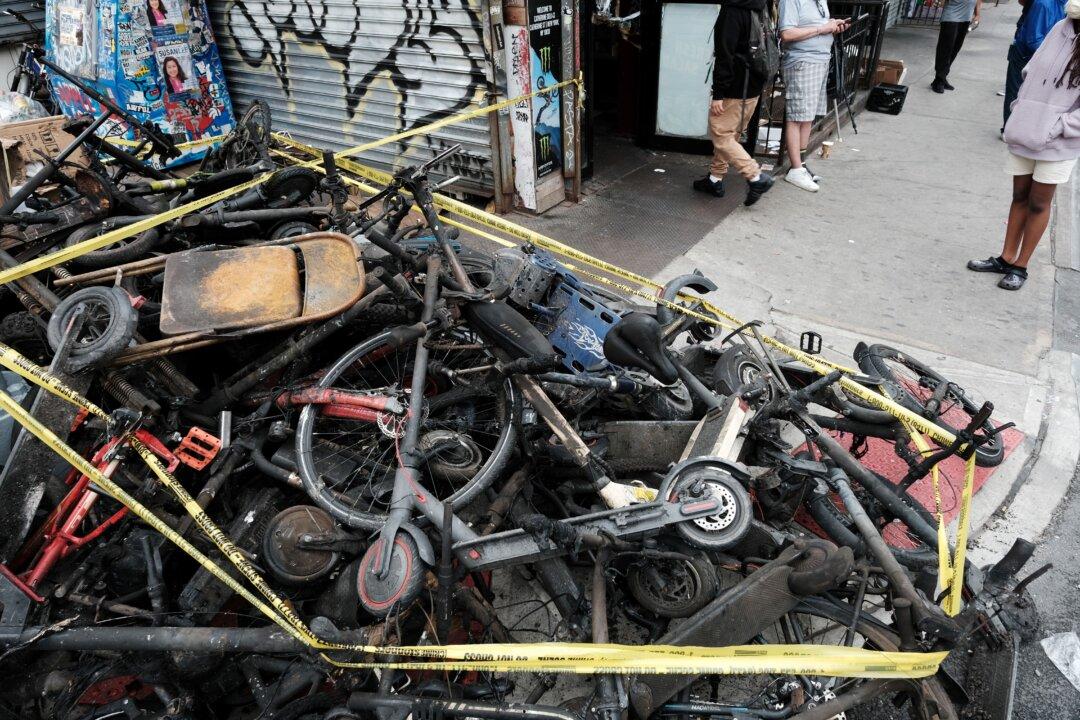Lithium-ion batteries have sparked hundreds of fires across New York and San Francisco this year, injuring dozens and resulting in the death of a few individuals, triggering worries about public safety.
In New York, the number of fires caused by lithium-ion batteries has “grown exponentially every year since 2021,” Fire Commissioner Laura Kavanagh said on July 21 during a public safety briefing. “We are now, unfortunately, seeing more and more of these kinds of extremely fast-moving, very powerful fires with some regularity in the city. As of this week, there have been 131 fires, 76 injuries, and 13 deaths caused by these lithium-ion batteries.”





